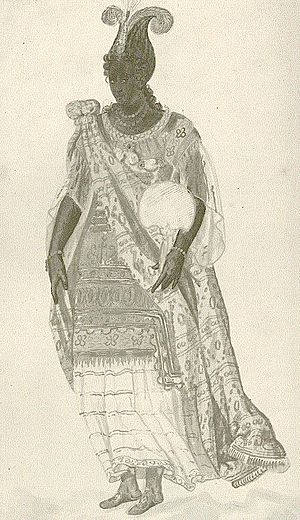Frances Knyvet facts for kids
Frances Knyvet (born 1583, died 1605) was an English lady who lived at the royal court. She was known for performing in special plays called masques.
Life at Court and Masques
Frances Knyvet was the daughter of Henry Knyvet and Elizabeth Stumpe. Her father was from Charlton Park, Wiltshire. Her mother's family was wealthy from making cloth.
Her first husband was Sir William Bevill. He was from Killigarth, near Polperro. Sir William died in 1600. Some stories say he was hurt by a bull. This might come from a bull carving at a local church.
In 1602, Frances married Francis Manners. He later became the 6th Earl of Rutland. Their family home was Belvoir Castle. Francis Manners became a Knight of the Bath in 1605.

Frances was a dancer in masques at the court of Anne of Denmark, the Queen. She was called "Lady Bevill" when she performed. On January 6, 1605, she appeared in The Masque of Blackness. She played a character named Notis. Her sister, Catherine, also performed. This masque was a celebration. It marked Prince Charles becoming the Duke of York.
Frances Knyvet died in the summer of 1605. She passed away from a sickness called smallpox. She was buried at St Mary the Virgin in Bottesford, Leicestershire. Her husband became the Earl of Rutland in 1612.
About Frances Knyvet's Identity
Sometimes, Frances Knyvet is confused with another lady named Frances, Lady Manners. This other Frances was born in 1571. She was Frances Cary, and she married George Manners, 7th Earl of Rutland. This happened in March 1605. Lady Anne Clifford wrote about this other "Lady Manners." She said this friend visited her in London in 1616. She even helped Lady Anne with her hair.
Some old paintings were once thought to be of Frances Knyvet. But now, experts believe they show Cecily Tufton Manners, Countess of Rutland instead.

